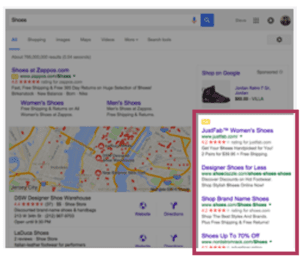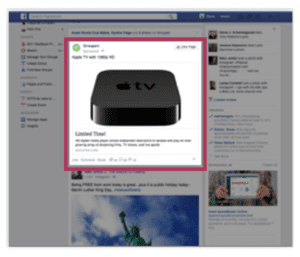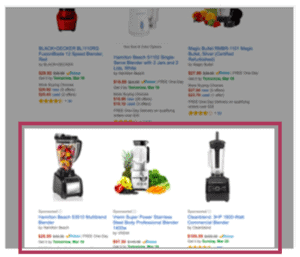As advertisers look to combat consumers’ discerning attitudes toward digital advertisements, native digital advertising has been a favorite solution. Whether consumers feel that ads have grown too intrusive or they’ve taken the step to use ad-blocking technology, native digital ads work to combat these concerns while still achieving impressions, conversions, and other metrics.
The growth of native advertising has been rapid. Between 2016 to 2020, native digital ad spend in the United States more than tripled. As advertisers quickly realized the success of native, they invested more media budget it’s way, leading to native accounting for nearly ⅔ (61%) of all display digital advertising last year. And, by the end of 2021, it’s projected to reach $57 billion.
Whether you’re new to native digital advertising or interested in diversifying your native advertising with new formats available, we’ve broken down everything you need to know about this fan-favorite ad format. You can also read our full native ad explainer here!
What is Native Digital Advertising?
Native digital advertising is a form of paid advertising created to look, feel, and function just like the content around it. Just as the name alludes, it is meant to natively blend in with the content around it. This happens in three ways:
- Location: the ad is placed within the content
- Value: The ad is relevant like the content
- Design: the ad is formatted like the content
When using native ads, the creative pieces can actually be uploaded piecemeal as individual components and then are reassembled in the proper shape to match the format of the publisher content on the site.
The options in creative imagery allow advertisers to choose from image, instant-play click-to-play play video, cinemagraph, or a carousel feature, appearing on multiple channels, publishers, and formats. A clean layout and relevant placement improve consumer experience and publisher performance.
What are the benefits of Native?
With over 20 billion native opportunities advertisers can take advantage of each month, there’s no shortage of opportunities to quickly take advantage of the benefits this platform provides.
- Brand Safe: Although the digital advertising landscape has made great strides to combat ad fraud and brand safety concerns, they remain a top concern. When choosing native, because you’re choosing the content your ad appears around, it naturally creates a brand-safe environment.
- Turn-Key: As mentioned above, with the right partner, advertisers can upload existing creative assets to then be turned into native ads. This allows for re-purposed content, less lift, and a quicker point of entry to use this format.
- Effective: Because native ads match the surrounding content, users naturally absorb the message. The ads are relevant to the consumers, which means they’re more likely to be interested in them. Consumers are overwhelmingly in alignment that if they’re interested in the content, they’ll engage with (or click on) it, no matter if paid or not. According to AppNexus, native ads are 8.8x more likely to be clicked on than regular display ads.
6 Native Digital Advertising Formats
1. Paid Search

We’re all familiar with and have experienced this form of native advertising. Native paid search ads appear at the top of your search results when browsing. They’re considered one of the original forms of native advertising since they appear just as the non-paid search results. Only differentiated by the small, bolded “Ad” in the upper left-hand corner, they perfectly fit the form of the results page.
Native paid search keeps your brand topof mind as consumers actively look for your products and services. Additionally, it’s great to use for geo-located targeted campaigns.
2. Paid Social

This is another form of native advertising that we’re all probably familiar with and experienced personally. Native paid social ads are appear “in-feed” as consumers browse their social pages (different from In-Feed Native advertising, more on that next). These ads target consumers based on trending topics and their interests and appear in their feed alongside, and in the same format as the content they see friends, family, and other people they follow.
3. In-Feed

Just as native paid social ads appear in-feed as consumers browse, native ads are also be placed in-feed across other channels and environments. When referring to “In-Feed Native Ads,” its ads published across a list of pre-approved websites. These ads appear just as the content around it, other than an “ad” or “advertisement” label that will appear alongside it. When a targeted consumer clicks on the ad, they are taken off the publisher’s site to the brand’s landing page. This enables brands to show their content as consumers move across the internet and the customer journey.
4. Sponsored Content

Native sponsored content also appears across a list of pre-approved websites; however, rather than appearing “in-feed,” these ads usually appear at the bottom of the right-hand column of a website. They allow for the same targeting as in-feed ads and also take consumers out of the publisher’s website and to the brand’s landing page when clicked.
5. Promoted Listing

These native ads only appear on eCommerce websites such as Amazon, Walmart, Target, etc. They show up exactly like other products or services that consumers see, just with an “Ad” connotation next to them. Like native paid search ads, native promoted listings meet your consumers as they browse and buy for your product or service. In highly competitive and saturated markets, these ads help distinguish your brand from the competition.
6. Recommended Widget

Recommended widgets are one native ad form that strays from the idea of appearing just like the rest of the content on the page. These ads are integrated into the publisher’s content, and main paid, but the widgets do not have the same appearance as the feed. These ads are usually distinguished by cues such as
- “You may also like.”
- “Recommended for you.”
- The sponsor name is placed after the headline or image
- Brand name or logo, such as “Sponsored by Digilant.”
Incorporating Native into your Media Mix
Native digital advertising improves the website experience for consumers while also extending advertisers’ reach to high engagement creative types. Advertisers are able to run the same creative unties across multiple exchanges and placements, saving them time and resources while providing a fresh, engaging ad experience for their audience. All in all, this leads to better campaign performances and engagement, helping support your brand’s overarching KPIs.
Benefits of Native Advertising with Digilant
Digilant is a premier omnimedia digital advertising partner that leads decisions with data. We dive headfirst into solving for our client’s goals which ensure the best tactics, channels, and formats are implemented to achieve your goals. When we see opportunities for our client’s to use native ad formats, these are some of the benefits you’ll experience when working with Digilant:
- Single Platform Workflow: Easily activate native as a channel within existing campaigns, and leverage creatives across all compatible inventory.
- Premium Inventory: Premium publishers that care greatly about creating a good user experience which means your native ad formats are incorporated seamlessly into the site.
- Omnichannel Insights: With your digital advertising all under one roof, you can easily generate audience insights across all channels with Digilant’s analytics tools.
Interested in adding native advertising to your media mix. We’re eager to talk to you about how we can solve for your brand’s goals. Contact us here.